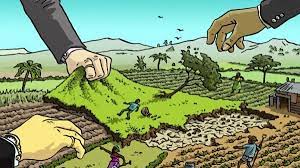June 2019 the global network of C40 Cities Report June 2019 referred to the impact of ‘urban consumption’ as to greenhouse emissions and the need to ensure urban/city reduce their greenhouse gas emissions in line with an internationally agreed limit. This includes: Urban consumption as a key driver of global greenhouse emissions having a significant impact beyond their geographical borders by influencing global supply chains. Stating that C40 Cities represent 10% of global emissions when accounting for consumption based emissions. Therefore C40 cities have a strong plan in place to significantly cut emissions directly within their geographic boundaries. These are emissions measured by what is consumed in cities, where urban consumption is to be halved by 2030 (7 years from now)
Where high income C40 cities must decrease their consumption by 2/3rds within the next decade, to adopt sustainable consumption patterns. Cities have already set targets to take meaningful action to reduce local emissions from buildings, energy, transport, waste, however its taking much more action than this. C40 Cities key consumption categories are that cities are to target food, buildings and infrastructure, clothing and textiles, private transport, aviation and electronics, also household appliances. Reduce the number of new clothing items an individual can buy each year. Dietary change – lower meat and dairy consumption, reduce the number of flights an individual can take, reduce car ownership
The report builds on ‘The Future of Urban Consumption in a 1.5c World which includes food as the biggest source of human consumption based emissions stating that food related emissions could increase by 38% by 2050 under a ‘business as usual’ scenario
That 60% of food emissions are agricultural, 16% relate to electricity use, 9% to fossil fuel production, 5% to transportation. Food types are documented as animal based food representing approx. 75% of food emissions against 25% consumption of plant based foods. Therefore C40 cities encourage, support the consumption of plant based foods, stating it is sustainable to eat much less meat and dairy that animal sourced food needs to decrease significantly. Make diets rich in nuts and vegetables. An average of 2,500 Kcal per person a day. The problem there is that depending on height, weight, metabolism, what sort of work one does depends on how many calories one may need to consume. (That throws that one out with the babies bath water.
As for plant based food research has found that this is higher in sugar and often lacks the important nutrients of real meat. That those that consume plant based foods fell below the daily requirement for calcium, magnesium, potassium, zinc and B12. Our bodies are designed to absorb protein from animal sources much more efficiently than from plants. The Journal of Agricultural and Food Chemistry has shown that we do not absorb as many essential or non essential amino acids from meat substitutes as we do from real meat itself.
The C40 Report that reducing food emissions from food consumption requires actions from all actors- government, business, cities, civil society and citizens. That government are to influence the availability and affordability of foods working with regulators conveners and educators to affect change. That urbanization/ cities will shape urban food consumption. Addressing food related consumption based emission in C40 cities 10th September 2019 report (Salesforce.com). Salesforce is a customer relationship management platform that enables businesses to manage customer data, sales operations and marketing campaigns.
Salesforce partners with Microsoft. Blackrock owns large shares in Salesforce. 66,756,973 shares. Vanguard also has shares in Salesforce. BlackRock the largest Asset manager of coal, oil and gas in the world. World Economic Forum biodiversity Cities by 2030. Transforming cities. The guiding framework for cities to transform their relationship with nature and urban development. WEF Network of Global Future Councils 2019-2020. The WEF Network. Director of International Diplomacy, C40 cities Climate. President and Chief Revenue Officer Salesforce. Deloitte, Salesforce and World Economic Forum collective action within the community to develop sustainable city solutions. C40 Cites is a network of mayors from a 100 cities worldwide.
Reduce private vehicles by 30%. C40 Cities and ‘no driving days program’. South Korea rewarding their citizens who reduce their driving each year in C40 Cities. A reward system. Mayors, business and citizens in C40 cities must take action to reduce consumption based emissions on aviation by 26% by 2030. Citizens living in urban/City areas to have their climate footprint measured in new ways which include consumption. Urban businesses, citizens what they ear, what their wear, how things are made and what transport they use
The Future of Urban Consumption in a 1.5c World produced in partnership with Arup and the University of Leeds collaborating with the C40 City Global Network, where C40 Cities consumption based emissions must be cut by 50% by 2030 (within 7years). Auckland a C40 City. Auckland Council website ‘Easy eco tips to green up your life’ 28/4/2023. Through activities, workshops cook healthy plant based meals use climate friendly transport.
Scoop News 5th January 2023 ‘ Aucklanders Rates Pay for Project to Convert Meat Eaters to Vegetarianism. Auckland Ratepayer Alliance called on Auckland Council to get its butt out of Aucklanders dining rooms after it uncovered that the council had spent nearly $50,000 on a survey to measure how receptive meat eating households are to converting to vegetarianism
Auckland rates significantly increasing and ratepayers money being spent on Aucklanders diets. Its reported that cities are leading the way to consumption degrowth. A planetary health diet by 2030. A C40 Food Cities Declaration. C40 City Adaption monitoring, Evaluation and Reporting Systems around the world, a governance structure. Operation of the MER System regional, national policy makers as well as other actors. Auckland plan sets out detailed series of indicators to measure success. Descriptions of climate action, sub-action, measurable targets, indicators, levels of resources required
The plan incudes a data series by partner agencies as well as data collated by Auckland City admin. The Auckland Adaption Plan can be found on the net it is 179 pages long.(Dated December 2020) Making urgent radical changes as to what you do as individuals, communities, businesses. Mana Whenua Kaitiaki Forum partnering with Auckland Council to provide a Maori perspective throughout the councils plan to control the population of Auckland, through an Iwi lens.
Stating our human behavior is out of balance with the world around us. Social engineering your behavior is critical to bring about their C40 Consumption reduction plan..
BEHAVIOURAL ENGINEERING OF POPULATION’S WITHIN URBAN ‘CITY’ AREA’S ‘AUCKLAND C40 CITY’ : How do you feel about being told you can only buy 3 items of clothing per year, what to eat and how many calories you are allowed consume per week? I kid you not, its on the global agenda this is a radical plan that’s ready to be implemented with urgency. How is Auckland Council spending rate payers money?
RESEARCHED BY Carol Sakey
LINKS
https://www.aucklandcouncil.govt.nz/plans-projects-policies-reports-bylaws/our-plans-strategies/topic-based-plans-strategies/environmental-plans-strategies/aucklands-climate-plan/Pages/default.aspx
https://www.aucklandcouncil.govt.nz/plans-projects-policies-reports-bylaws/our-plans-strategies/topic-based-plans-strategies/environmental-plans-strategies/aucklands-climate-plan/Documents/auckland-climate-plan.pdf 179 pages pdf
https://cdn.locomotive.works/sites/5ab410c8a2f42204838f797e/content_entry5ab410fb74c4833febe6c81a/60ab8b42cc0a6f00a50c1c3d/files/MER_Annex_FINAL.pdf?1621855171 15 pages pdf
https://ourauckland.aucklandcouncil.govt.nz/news/2023/04/easy-eco-tips-to-green-up-your-life/
https://www.c40.org/news/new-research-shows-how-urban-consumption-drives-global-emissions/
https://www.c40.org/news/new-research-shows-how-urban-consumption-drives-global-emissions/
https://www.scoop.co.nz/stories/BU2301/S00012/aucklanders-rates-pay-for-project-to-convert-meat-eaters-to-vegetarianism.htm
https://www.c40knowledgehub.org/s/article/In-Focus-Addressing-food-related-consumption-based-emissions-in-C40-Cities?language=en_US
https://c40.my.salesforce.com/sfc/p/#36000001Enhz/a/1Q000000MfOM/N6kN_Qv9B.ilgwImBIwaOKqDXVKtr5wcjY6q8NBtw40 Addressing Food related consumption based emissions in C40 cities (Salesforce.com) 31 pages 10th September 2019
https://www.c40knowledgehub.org/s/article/The-future-of-urban-consumption-in-a-1-5-C-world?language=en_US
...






